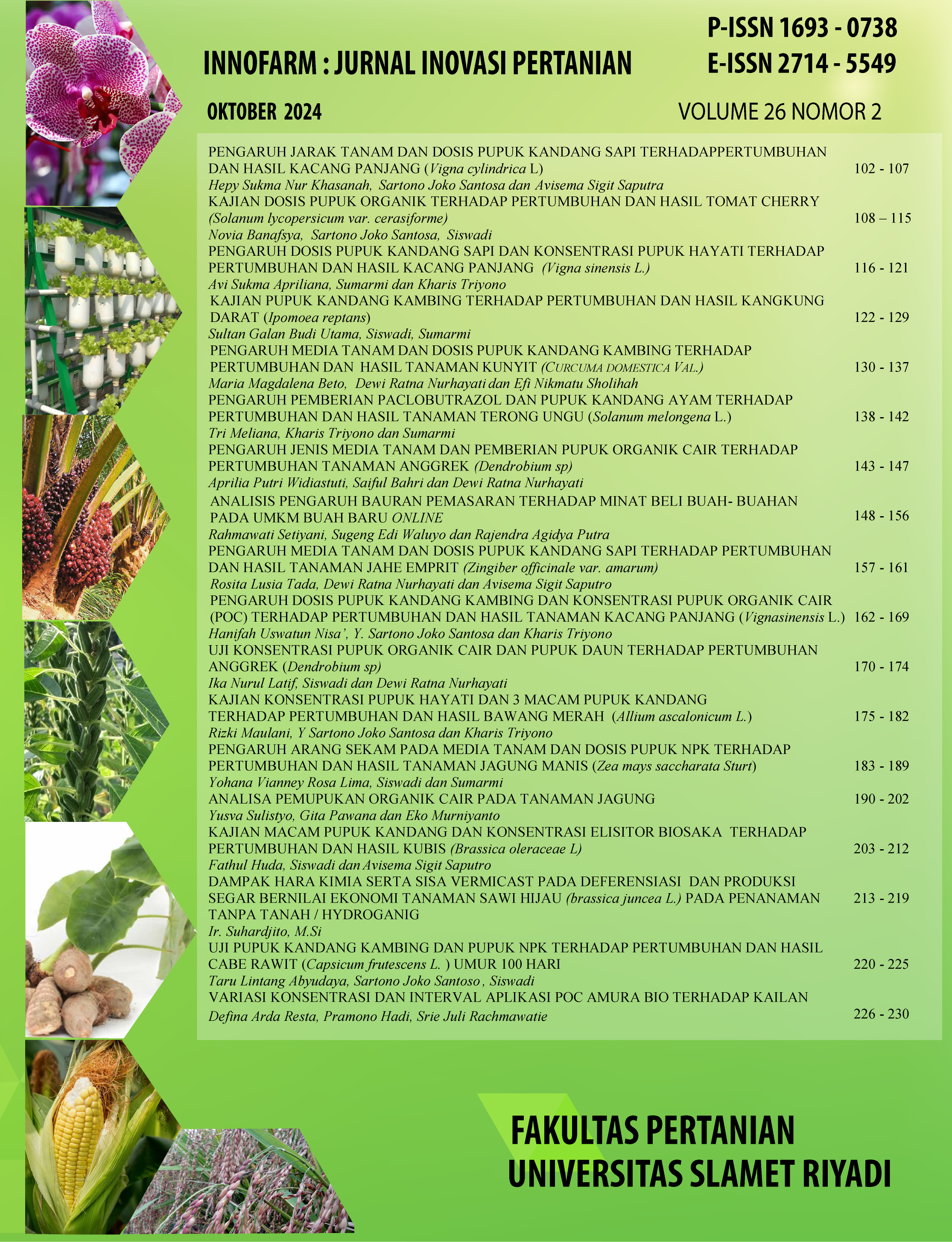Growth and Yield of Kailan Plants (Brassica oleraceae Var. Alboglabra) in the Concentration Treatment and Time Interval of POC Amura Bio
Keywords: concentration; interval; kailan; poc
DOI:
https://doi.org/10.33061/innofarm.v26i2.10961Abstract
Using liquid organic fertilizer in agriculture can enhance the population of soil organisms and improve the soil's chemical, physical, and biological properties. This research aimed to determine the interaction of Amura Bio liquid organic fertilizer at various concentrations and time intervals on kailan (Brassica oleraceae Var. Alboglabra). The study was conducted from May to July 2024 in Kedunggalar, Ngawi, East Java. The research design employed was a Complete Randomized Block Design (RAKL) with 2 factors and 9 combinations, repeated 3 times. The first factor was the POC concentration with 3 levels: K1 = 20 ml/l, K2 = 40 ml/l, and K3 = 60 ml/l. The second factor was the time interval with 3 levels: I1 = once every 3 days, I2 = once every 5 days, and I3 = once every 7 days. Observed parameters included plant height, leaf width, root length, fresh fruit weight, and dry fruit weight. The results indicated an interaction between concentration and time interval for the administration of Amura Bio POC on the fresh fruit weight parameters. Amura Bio POC at a concentration of 60 ml/l produced the best results for all parameters, and a time interval of every 3 days provided the best results for several parameters.
Downloads
Published
Issue
Section
License
Copyright (c) 2024 Defina Arda Resta, Pramono Hadi, Srie Juli Rachmawatie

This work is licensed under a Creative Commons Attribution-NonCommercial 4.0 International License.
Authors who publish this journal agree to the following terms:
- Authors retain copyright and grant the journal right of first publication with the work simultaneously licensed under a Creative Commons Attribution License that allows others to share the work with an acknowledgement of the work's authorship and initial publication in this journal.
- Authors can separately make additional contractual arrangements for non-exclusive distribution published by the journal (e.g., publish it in a book), with an acknowledgement of its initial publication in this journal.
- Authors are allowed and encouraged to send their work via online (e.g., in the institutional repositories or their website) after published by the journal.


















